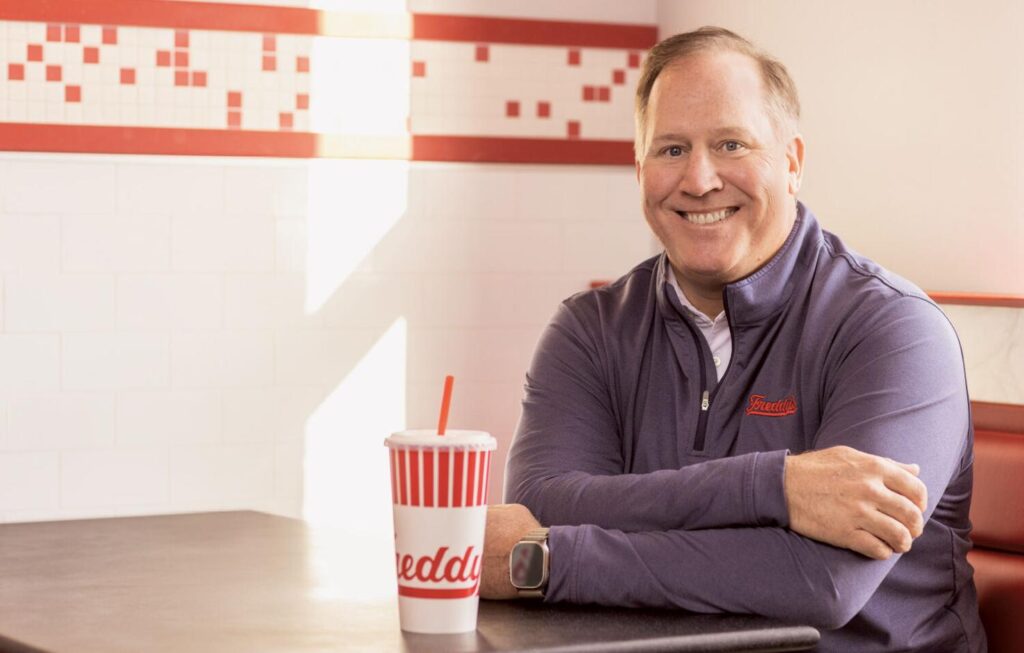Article Source: Franchise Times
Chris Dull’s menu hack? Add grilled jalapenos to the Freddy’s original patty melt.
“You can add grilled jalapenos to any burger on the menu and it’s just next-level good,” says Dull as he settles into a scarlet red-cushioned booth inside the new Freddy’s Frozen Custard & Steakburgers training and innovation center in Wichita, Kansas, in December.
Dull, who’s coming up on his fourth year as CEO of Freddy’s, cuts an imposing figure at 6-foot-4. The former Baylor University linebacker, though, is affable and relaxed, cracking jokes about the slang words in his teenaged son’s vocabulary—“rizz,” “yeet,” “skibidi”—and enthusiastic in his outlook for 553-unit Freddy’s.
He has good reason for excitement. Freddy’s is closing in on $1 billion in systemwide sales after finishing 2023 with total sales of $925 million. (The company projected it would end 2024 at $988 million.) Its unit count is up more than 45 percent since 2019, and the average unit volume is nearing $2 million.
Franchisees are signing on for more territories and consistently opening units despite persistently higher construction and operating costs.
“Freddy’s is a strong enough brand that we’ve been able to withstand the pressure,” says franchisee Mike Young, who opened his first Freddy’s in Iowa in 2015 and is preparing to unveil No. 12 this year. He bought the development rights for Rochester, Minnesota, and La Crosse, Wisconsin, last year, adding to his territories in Iowa and Illinois.
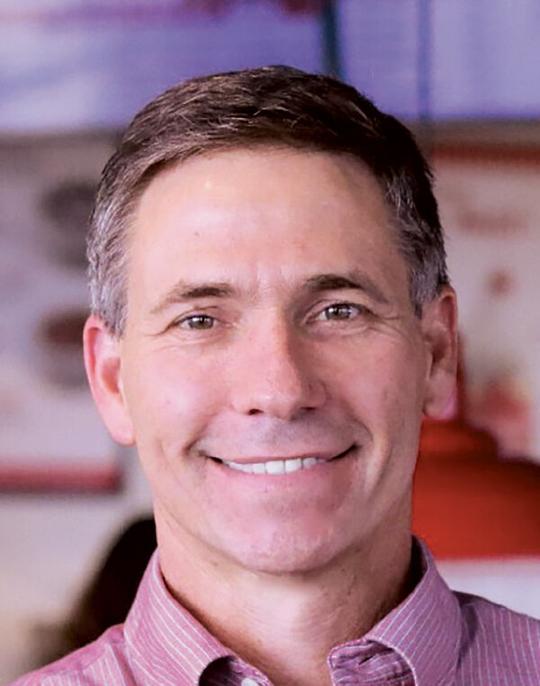
“I have a lot of confidence, or I wouldn’t be signing up for more territories,” he says.
Private equity owner Thompson Street Capital Partners is likewise confident. The St. Louis-based firm acquired Freddy’s from its founders in March 2021 with “really high expectations,” says Managing Director Joe St. Geme, and the brand’s exceeded those expectations.
“In my mind, the most important thing is making sure your franchisees are happy, they feel supported, they have the resources they need. And as long as we’re doing that, the rest mostly will take care of itself, right?” he says. “And so if that means investing a couple extra million dollars in a facility or in a supply chain or in a pricing study on their behalf, so they can have better AUVs or feel better about their supply chain, or whatever, great. Because that will come back to us tenfold over.”
Whether that tenfold return comes back to Thompson Street via the sale of Freddy’s remains to be seen. The firm and Freddy’s are working with two investment banks, William Blair and North Point Advisors, to explore a potential sale as Thompson Street approaches year four of its ownership.
St. Geme declined to comment on the possibility of a transaction, while Dull says it could be a “great thing for Freddy’s.”
“We’ve done well, and I think that the groups that will be interested in acquiring a business like this are groups that probably have tremendous experience in this space and can really help bring that next level of value add,” says Dull. “And so I’m excited for that possibility, and I think it’s very real.”
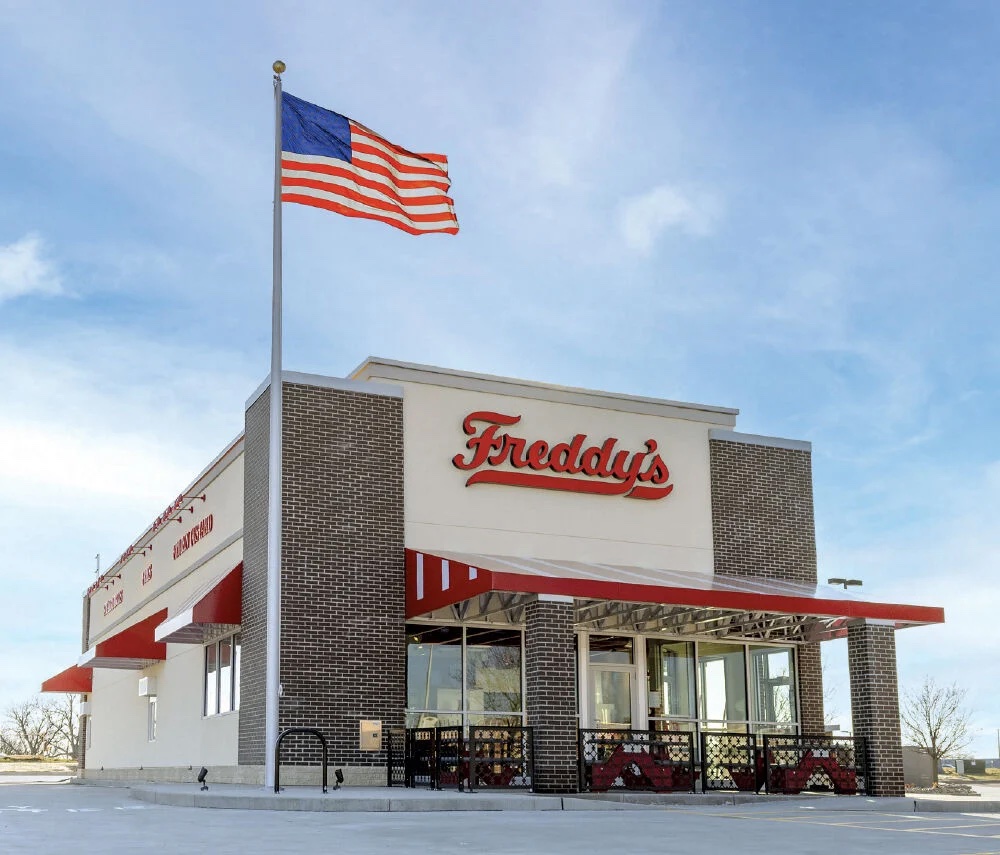
‘Data is king and queen’
Chicken was an afterthought at Freddy’s, something reflected in guest feedback and sales. The company changed suppliers, upgraded the sandwich’s build and customers responded.
“When we improved our chicken game in early 2024, we basically doubled our chicken sales overnight,” says Dull of the new grilled and crispy chicken club sandwiches Freddy’s introduced in January 2024.
It’s a real-restaurant example of how Freddy’s draws on data to inform its decisions, an approach Dull drove home from day one.
“As a leader, for me to come into a business like this and think that I had all the answers to drive Freddy’s to where it needed to go, would be foolish and would be egocentric, and that’s just not who I am,” says Dull as he explains his philosophy upon arrival at Freddy’s. Instead, he told corporate employees and franchisees, “data is going to be king and queen.”
“We are not going to do things because I think it’s a good idea, or because you think it’s a good idea. We’re going to do things because our guests tell us what they want,” he says. “We’re going to have the data to back it up, and we’re going to agree that it’s a good thing to do.”
It’s with that mindset that Dull & Co. tackled an assortment of initiatives to modernize the brand, improve operations, attract new customers and set Freddy’s up to fulfill a development pipeline of more than 500 units sold. The standing up of a national marketing program, notes Dull, was among the most impactful efforts with a wide reach touching enhanced digital capabilities and loyalty, a more robust limited-time offer calendar and off-premises channels.
All of that, of course, takes money. Prior to Thompson Street’s ownership, Freddy’s was collecting just 0.375 percent of a 3 percent national marketing and advertising fund fee. It’s since moved to a 1.5 percent fee, or about $14 million in total collections. That’s still “far less than most brands our size,” says Dull, and “we have to earn it with our franchisees.”
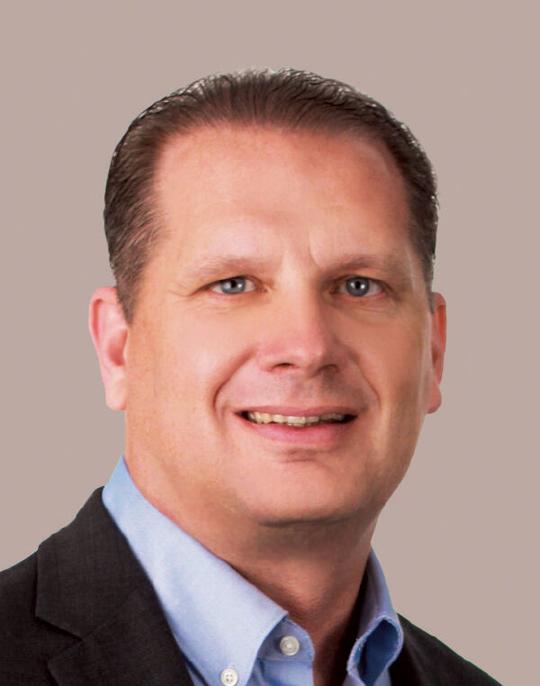
“We have to show them that the media is working. We have to show them that the creative that we’re coming out with is resonating with our guests,” he says. “We have to show them that we are driving trial, we are driving traffic, and a lot of what we’re doing in ‘25 is building dashboards through our business intelligence tool to help illustrate how the spend is effective and where our money is best spent.”
To franchisee Jason Ingermanson, the additional marketing contribution is paying off. Ingermanson, president and CEO of JRI Hospitality, says though the higher fee “was tough for some franchisees to swallow,” the move was essential to support expansion.
“It’s never fun, but at the end of the day at 83 locations, no one’s writing a bigger check for the national fund than I am,” says Ingermanson, a franchisee since 2009. “I think it’s absolutely necessary, and it’s going to continue to be more necessary as the brand grows.”
JRI Hospitality’s restaurants stretch across 15 states, 10 of which it introduced the brand in by opening the first Freddy’s location. Local marketing tactics and the positioning of Freddy’s as a “pillar in the community,” says Ingermanson, are foundational for the concept, while through the ad fund the company directs resources to improving the loyalty program, for example, or the promotion of catering, a revenue channel he’s excited to see increase this year.
“We wanted better IT. We needed a loyalty program. All these non-traditional ways of growing sales with delivery and catering,” agrees Young, also a Panera Bread franchisee with 23 locations.
Three years ago, the Freddy’s loyalty program had 100,000 members, an outdated app and no web-based ordering option. The company’s spent about $8 million since to improve the app and entire online ordering platform, which is integrated with restaurant technology provider Olo and the cloud-based Par Brink point-of-sale system. Loyalty members now number close to 2 million and nearly 12 percent of sales come via digital channels.
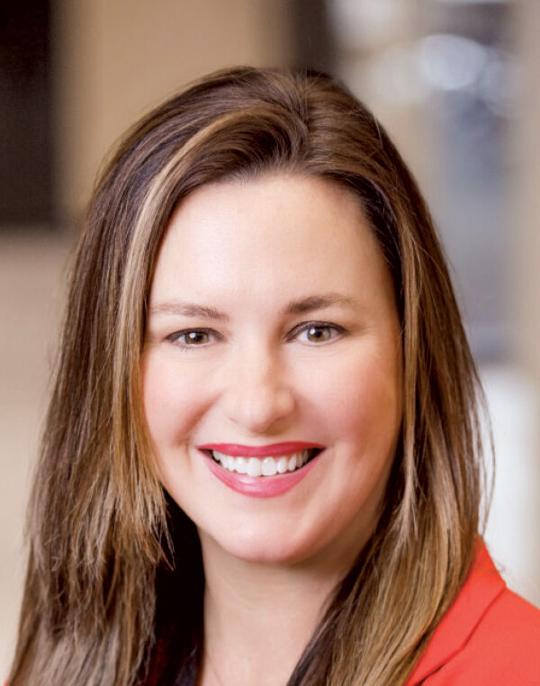
Freddy’s this year will work to take advantage of the personalization and targeted message capabilities that come through the loyalty platform. Being able to communicate directly with FredHeads, as Freddy’s calls its loyalty members, means the brand can push more relevant offers, says interim Chief Marketing Officer Erin Walter, and increase the effectiveness of local advertising efforts.
“How do we get it closer where it feels local, it feels closer to home. You don’t feel like you’re just getting blasted a message, right?” she says, such as with the push notification of a fundraiser night at a customer’s favorite Freddy’s. “It’s about your community, and it’s about what’s happening in your community.”
A newly launched dine-in order module is another app capability, notes Walter, one that allows customers to order via the app and skip the line but still enjoy their meal in the restaurant. Freddy’s still generates 34 percent of sales from its dine-in business; the drive-thru generates 48 percent.
Broader marketing initiatives, meanwhile, still need to address brand awareness as new markets open and penetration in existing regions increases.
“We still need to educate guests on, hey, what is a steakburger? What is the Freddy’s way? What does that mean?” says Walter. “And so I’m excited for 2025, to continue that journey.”
Young, the Iowa franchisee who admits to being skeptical of the brand’s private equity owners and newly installed leaders at first, says he’s been impressed with how Freddy’s continues to evolve—especially in the face of inflationary pressures and a generally higher-cost operating environment.
“It’s been tough. We’ve raised prices to help recover some of those costs,” Young says of paying higher food prices, which he points out Freddy’s was able to mitigate somewhat after a review of its supply chain. “We’ve doubled down on training to focus on what we can control with food waste, cutting down on mistakes in the restaurants. Because we really have to be careful with raising prices. To some extent, we just have to be able accept lower profit margins in the short term, knowing that things will be good again.”
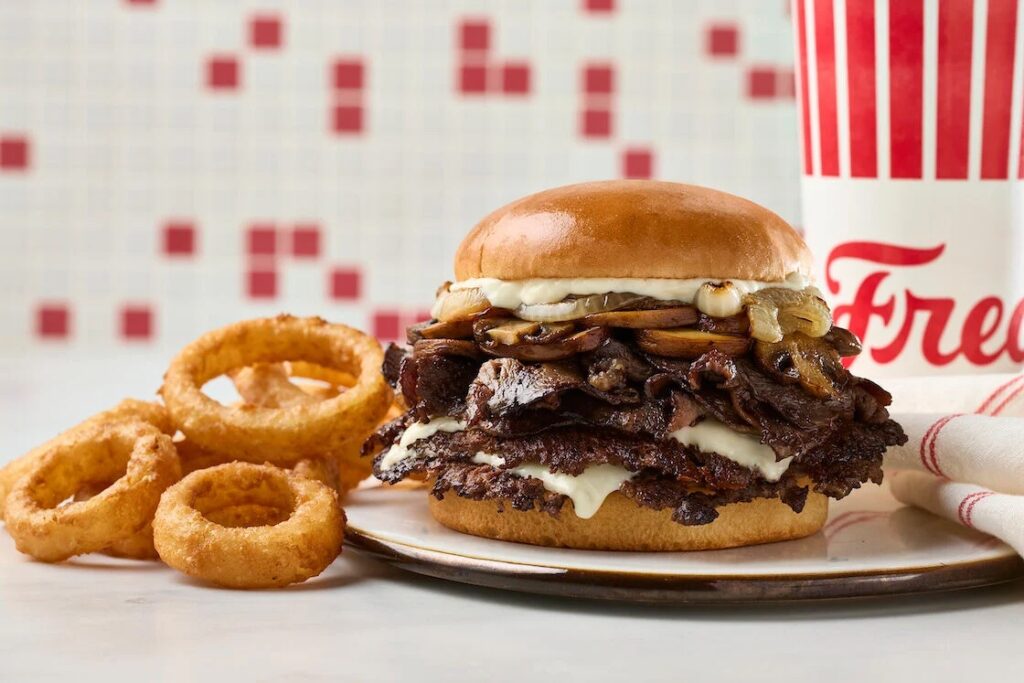
In consideration of profits and quality of life
Recognition of the unit-level realities and challenges franchisees face every day in their restaurants underpins decisions made at the corporate level, notes Dull. Freddy’s has 36 company restaurants, and Dull’s own operational experience—he got his start as a store manager with Marble Slab Creamery before working his way up to the CEO role of what became Global Franchise Group—informs his approach.
Consider the LTO strategy. Freddy’s last year debuted a slate of limited-time menu items, including some, like the Prime Steakburger, that are joining the permanent lineup in February. The company, says Dull, is committed to spending the money on research to find out what customers really want to eat, then working to ensure those items enhance sales and aren’t operationally disruptive.
“We always do the builds with the understanding that we’re trying to drive contribution margin. So we aren’t building products that don’t generate a higher profit margin for our franchisees,” says Dull. “When our LTOs are out there, if a guest decides to move up to the LTO, that’s a better sale for our franchisee, and we’re not cannibalizing something off the menu that was maybe more profitable.”
Any new undertaking, be it a menu item, an additional sales channel or an equipment change, needs to help franchisees make money. If it’s neutral to the bottom line, it must improve the quality of life for operators and their employees.
“One of the things that I’ve preached and continue to preach, is that we’re not going to do something with this business that is negative to our profitability,” says Dull. “Our franchisees appreciate that we’re pushing things out that are generating higher profits and are not negatively impacting the operation. And if they’re not generating more profits, they’re making it easier to operate a Freddy’s.”
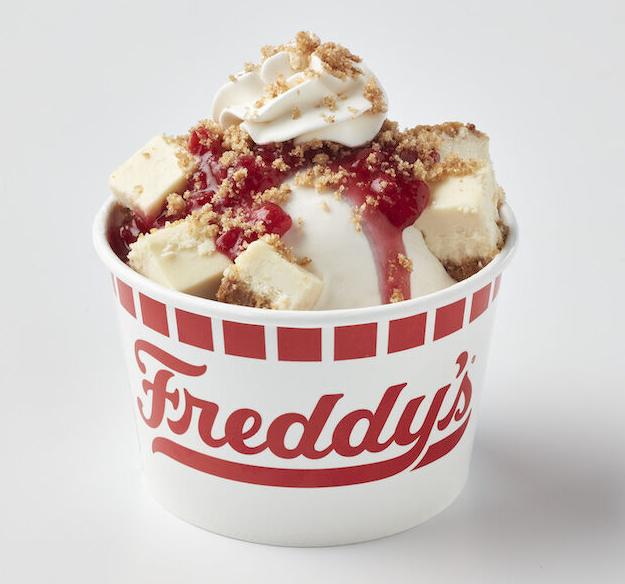
Take the introduction in 2023 of the Accutemp XLR8 grill press, continues Dull, who has a real-world example for practically every point he makes. It’s not an inexpensive piece of equipment, he acknowledges, but it increases the production speed and improves the consistency of the burgers. At the same time, it cuts down employee training time and reduces waste from patties made incorrectly.
“When you roll that all up, it’s a pretty quick ROI on that piece of equipment,” he says. Other improvements include a new kitchen display system using easier-to-understand graphic instructions and repositioning of the cold lines.
Restaurants added freezer boxes at the pass-through station for the drive-thru to ensure orders of the brand’s signature custard stayed chilled.
Sales continue to tick up. The systemwide average unit volume was $1.9 million in 2023. That’s up from $1.79 million in 2022, and an increase of nearly $375,000 since 2019.
Dull’s outlook is one that accounts for a consumer he says remains “fickle.” While the brand’s close QSR competitors are aggressively discounting their products—”that’s music to our ears,” he says—Freddy’s is careful not to devalue the meals it serves.
“I think that when you start to tell your guests that what they’re paying for your food is too much, because you can buy it on this day or at this time for less, then why would they ever pay full price?” he says. Freddy’s, he continues, is fairly priced, and its value proposition includes superior service.
Even as casual dining players such as Chili’s and Applebee’s offer $10.99 or $9.99 burger combos, after tax and tip, “I still spent $17 on a burger, fries and drink,” he says. “So the $9.79 combo at Freddy’s feels like a good deal, better quality and faster, and a better price.”
“But you’ve got to be excellent,” he adds. “You can’t have a bad experience. Because the value is in the combination of all of the above.”
Development that makes sense
Andrew Thengvall could be franchising’s least salesy development executive. Soft-spoken and considered in his comments, Thengvall is among the longest-tenured leaders at Freddy’s, joining the company as senior vice president of strategic growth and chief legal officer in 2015. Still the CLO, he added the chief development officer title in 2021.
Unit growth for Freddy’s, he says, is rooted in the return on investment, alignment of expansion goals and acceptance of achievable schedules.
“We’re also trying to be very mindful that what we want is a profitable Freddy’s, not just a Freddy’s,” he says. “And so over the years, we’ve been lenient and understanding on schedules, and I think, long term, that’s benefited us, and that’s benefited our franchisees.”
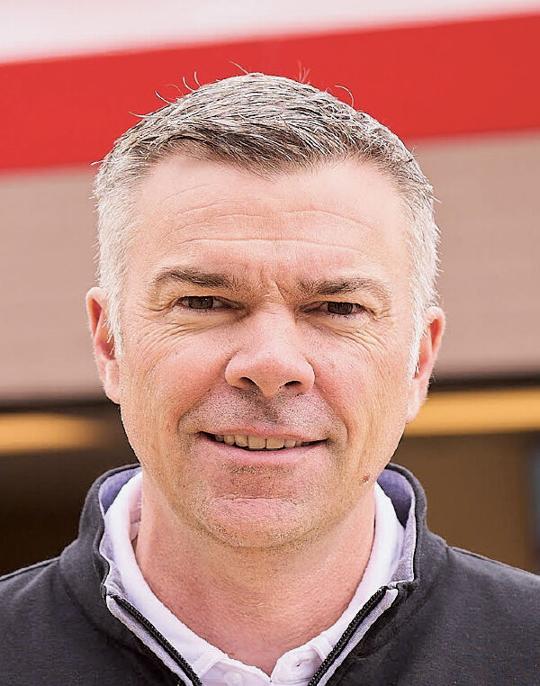
Freddy’s wants to be the preferred place for its owners to invest capital, and franchisees need to be confident the investment they’re making will generate the desired return, he says.
“We try to match the aptitude and capital structure of the franchisee to the territory and development commitments that they have,” Thengvall says of the 500-plus-unit pipeline. “And so every one of our multi-unit developers, from our largest to our smallest, have commitments to build more stores.”
Excepting 2020, when its net unit count grew by 18, Freddy’s consistently added upwards of 30 and sometimes more than 50 units each year since 2016. It finished 2024 with 40 new openings, and the introduction last year of a slightly smaller prototype, 2,400 to 2,800 square feet, helped reduce construction costs while devoting more space to pickup and drive-thru operations.
A construction management tool and improved site selection analytics are proving beneficial, Thengvall says, and Freddy’s now has an established general contractor network and additional suppliers to ensure timely sourcing of equipment.
While many new units are standalone drive-thru restaurants built from the ground up, development of inline locations is expected to increase as the sales volume proves attractive. Three franchised restaurants without drive-thrus did an average of $1.4 million in sales in 2023.
An inline corporate restaurant in Wichita, one the company’s CEO says cost about $900,000 to open, will do close to $2 million in sales without a drive-thru. An endcap Freddy’s has an investment range of $1.3 million to $2.5 million, while the cost to open a standalone restaurant is between $1.5 million and $2.7 million.
Development of non-traditional locations is another promising option. Freddy’s has 20 such units in airports, casinos, sports arenas and on college campuses.
At the Paycom Center, home to the NBA’s Oklahoma City Thunder, Freddy’s is the No. 1 food stand in the entire arena, Thengvall says, and franchisees are excited to pursue other types of venues.
The first Canadian Freddy’s, a restaurant in Manitoba’s capital of Winnipeg, is slated to open in March. The location is one of three stores franchisee John Hall and his Steakburger North expect to develop in the city. It comes after Freddy’s signed a master franchise agreement in late 2022 with North 49 Frozen Custard and Steakburgers for all of Canada, excluding Quebec.
Freddy’s is approaching international development the same way it does growth in the United States: deliberately and with ROI in mind.
“It will go at a pace that we’re comfortable with,” says Thengvall. “It may not be the fastest, but we have great partners, and we’re working with them to find sites that we think will be profitable in Canada.”
As Dull considers the future of Freddy’s, one that could include a new private equity owner, he praises franchisees for their execution at the unit level and ongoing commitment to the brand’s foundational values. It’s fitting, then, to give a franchisee the last word.
“Quality, cleanliness and genuine hospitality,” says Ingermanson. “That’s what we live and die on for our success.”
How data powers the culinary process
Chef Rick Petralia’s perspective on menu items is simple: It’s a home run or nothing.
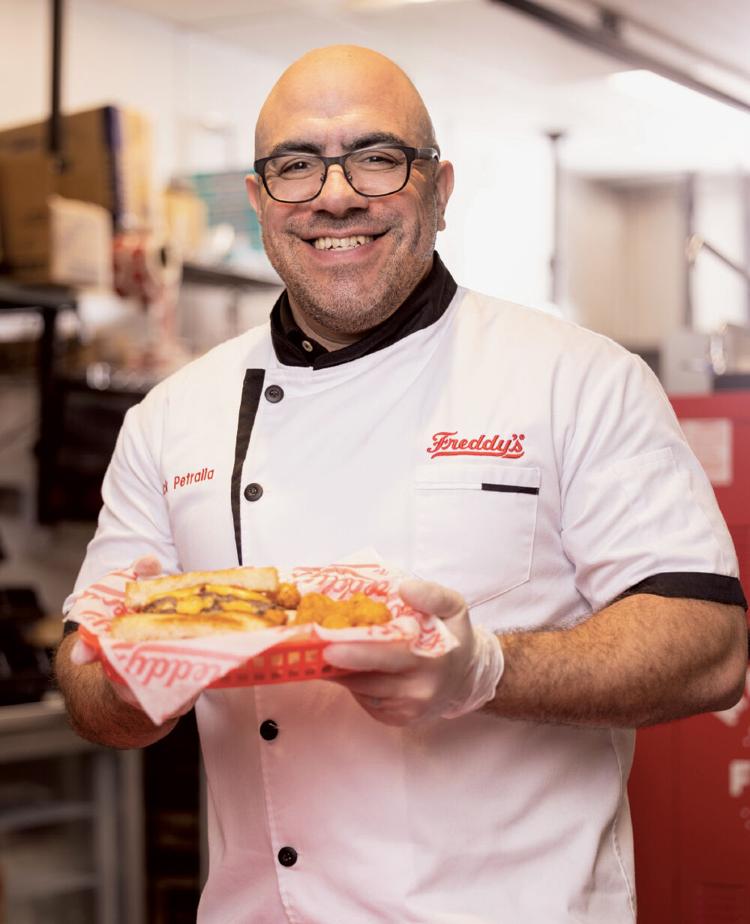
“We’re not looking for items that have slightly above average purchase intent. We’re looking for, like everything that I’ve shown you today, for example, is all 90th percentile purchase intent and uniqueness,” says Petralia. “We want everything to be a home run. We don’t want to have a lackluster performance for any of our products.”
Before joining Freddy’s as director of menu strategy and innovation in 2022, Petralia spent nearly eight years leading culinary innovation at Fazoli’s, where he honed the use of data in his creative process.
Fresh out of the kitchen inside the Freddy’s training and innovation center, where he prepared for tasting a handful of new menu items debuting in February, Petralia shares how he leverages the brand’s loyalty members and works with the cross-functional product development team to avoid operational snafus in the restaurants.
Take the Prime Steakburger, introduced as a limited-time offer last summer and this month joining the permanent menu.
“We tested it with prime rib, with garlic aioli, with horseradish aioli, and find out what has the highest scores through A/B testing,” he says. “And then once we find a winner with our loyalty users, then we’ll go to our third-party partner, and we will concept test through them.”
The winning build? Thin-sliced prime rib stacked on a steakburger patty with melted Swiss cheese, grilled onions and sauteed portobello mushrooms on a toasted bun with garlic aioli.
Working with the product development team, which includes leaders from the culinary, operations, marketing, purchasing and finance departments, Petralia says there’s consideration of what performs well in tests and can accelerate sales, and how much complexity the kitchen can handle. Think of a fried churro sundae, he says. Fun and delicious, perhaps, but with the separation of hot and cold lines in the kitchen, taking a churro from the fryer to the custard station might cause too many headaches for the staff.
“We need to make sure the juice is worth the squeeze, essentially,” he says. “Everything goes through operations.”
Other 2024 LTOs finding a spot on the main menu are the Grilled Cheese Steakburger, complete with bacon and a tomato spread on Texas toast, and a strawberry cheesecake concrete and cold brew coffee shake, both made with frozen vanilla custard.
Growing custard sales, which account for just 15 percent of total sales, says Petralia, is a goal this year.
“We think that can be much higher,” he continues. Along with new additions to the custard menu, Freddy’s is positioning its frozen treats to appeal to consumers beyond typical dessert occasions. Look for the cold brew shake, which he notes is made with real, caffeinated cold brew coffee, to serve as an afternoon treat, for example.
“I can get some caffeine and I don’t need to make another stop at a coffee place,” he says. “I can do it right at Freddy’s.”
Lemon cream and orange cream frosts, a lighter version of a Freddy’s concrete made with blended frozen custard and lemonade, are back February 10.
Freddy’s, says Petralia, is “very much rooted in Americana,” which means he can play with different flavors but at their core new menu items must be approachable.
“We’re keeping one foot in the familiar,” he says. “Familiar with a twist.”
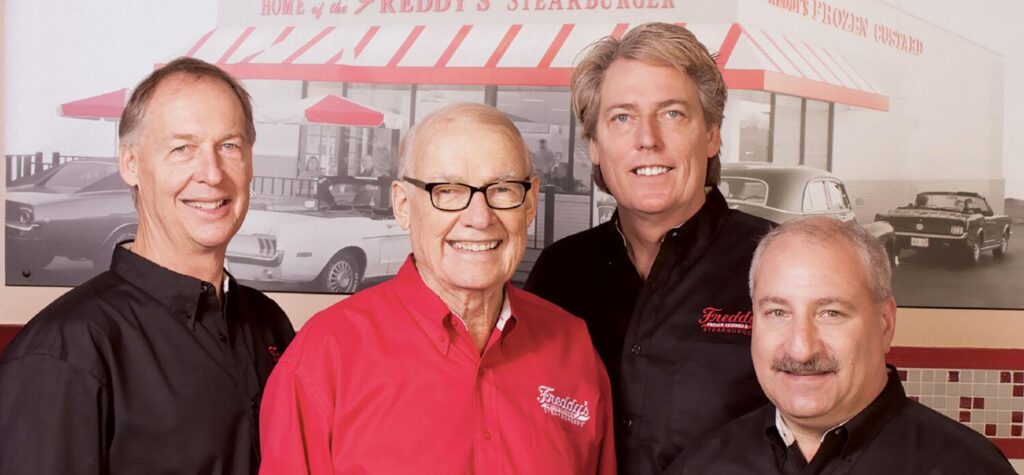
How Freddy’s got its start
Freddy’s Frozen Custard & Steakburgers is one of the fastest-growing restaurant chains in the country right now. It ended 2016 with 236 locations and total sales of $340 million. Eight years later it’s more than doubled those numbers with 553 restaurants and at press time a projected $988 million in system sales to wrap up 2024.
It’s likely not a status its founders envisioned when they opened the first Freddy’s in Wichita, Kansas, in August 2002.
Bill Simon was a certified public accountant by training, and was a senior vice president with a large Rent-A-Center franchisee in the mid-1990s. Simon helped the company with marketing, purchasing and real estate. In 1995, he was approached by friend Scott Redler, who wanted to open a steakhouse. Simon, whose company later sold out to its franchisor, agreed to help.
Simon and Redler brought a Timberline Steakhouse to Wichita in 1997, then added a few more even as their minds began turning to frozen custard.
Simon and his brother Randy—then a multi-unit Panera Bread franchisee—had for years been part of family trips to Lake of the Ozarks in Missouri, where they’d frequent a local frozen custard stand. Redler is a native of St. Louis, home to the famous Ted Drewes frozen-custard stand.
The three decided frozen custard needed a place in Wichita. They borrowed a steakburger recipe from the Simons’ father, Freddy, and talked about making shoestring fries and serving Chicago-style hot dogs—things they all enjoyed themselves. “It kind of grew as a lunchtime hobby,” Bill Simon told Franchise Times in 2014.
They gave the concept a nostalgic design, with a red-and-white color scheme and pictures dating to World War II on the walls, in homage to Freddy Simon. The concept’s namesake, Freddy Simon was a veteran of that war and awarded both a Purple Heart for injuries sustained and a Bronze Star for valor. He died in 2020 at age 95.
“It was received nicely,” Bill Simon said in that Franchise Times interview. “It wasn’t crazy busy like our stores seem to be now. But it opened nicely, and seemed like it was going to be a success.”
The trio added a second location on the other side of town, and “from there, it took on a life of its own,” Simon said. “People were asking us if they could be franchisees, and us saying no and eventually saying yes.”
The “yes” came after some good fortune. Ron Oberg’s eldest son came home one night, raving about the burgers at this place called Freddy’s. Oberg at the time was the president of the Kansas Restaurant Association, and owned a couple of Quiznos locations.
By June of 2004, Oberg signed a four-unit development agreement. Today he has 21 locations. The decision to franchise has been a boon to Freddy’s—franchisees operate 94 percent of the restaurants—and that’s not by accident. Because both Bill and Randy Simon were franchisees, the company crafted an operator-friendly business model. The company owns 36 locations and is opening more to ensure it maintains a deep understanding of the business.
And it keeps profitability as a primary focus.
“We don’t make top-line decisions, or solely top-line decisions,” Bill Simon previously told FT. “We make long-term, bottom-line decisions.” He mentioned Burger King’s infamous $1 Double Cheeseburger, a promotion pushed by the franchisor at a time of weak sales, but vehemently protested by franchisees. Burger King ultimately dropped the promotion. “Our franchisees won’t have decisions like that made for them,” Simon said.
Simon died in 2016 after a battle with cancer, but his words still ring true and were echoed by Freddy’s CEO Chris Dull.
“One of the things that I’ve preached and continue to preach, is that we’re not going to do something with this business that is negative to our profitability,” said Dull. “Our franchisees appreciate that we’re pushing things out that are generating higher profits and are not negatively impacting the operation. And if they’re not generating more profits, they’re making it easier to operate a Freddy’s.”
